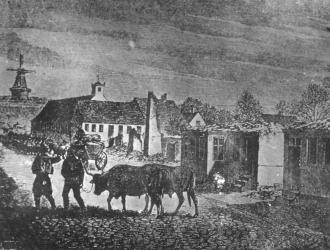
Horticulture and Crafts
When Fredericia was founded in 1650 as a fortified town it was necessary to establish a township which could support the fortification itself with commerce and service facilities.
To encourage people to come privileges such as tax exemption and free farming were given to the newcomers. The first citizens were skilled workers and building constructers but even more inhabitants were needed so people from three neighbouring villages were forcibly transferred and the villages abandoned. The population of the town was thus enhanced by 300 farmers and peasants in 1651.

Fredericia was never characterized by large scale merchants as was the case with many other towns. By 1735 the town was richly supplied with all sorts of trades but the craftsmen were poor. The trades were organized in guilds until new legislation forbade this in 1862. In 1848 the town's first trade guild was founded.
Until the middle of the 19th century farming and raising cattle were the main occupations in Fredericia. To every parcel within the rampards corresponded a field outside and the plot owners had access to garden plots. An important supplement to the horticulture in Fredericia became the Reformed Congregation who came to the town by royal invitation. The community was given special privileges and pushed foreward agriculture because they understood how to fertilize in a more efficient way. On top of this they carried with them new crops such as tobacco and potatoes. In this way Fredericia became the primary place for Danish tobacco growing. The tobacco from Fredericia was a cherised commodity by especially tobacco factories in Holstein until 1814.
During the 19th century the horticulture gradually became of less importance for the economy of the town. Nevertheless the town was still dominated by agriculture and it was first in the 1960s that the last cows were driven out of town to pastures.